Which Bears?
... and which species did we decide on?
We couldn’t pick just one—so we celebrate them all, even the honorary “bear wannabes” like the red panda!
Every bear species, every subspecies, they all get their moment here.
Curious which bear you’ve spotted on a shirt? Check the product description for a sweet bear factoid.
Exploring the eight living species of bears around the world
Brown Bear
Ursus arctos
Found across North America, Europe, and Asia. The largest terrestrial carnivore.
Notable subspecies:
Grizzly Bear, Kodiak Bear, Eurasian Brown Bear
American Black Bear
Ursus americanus
North America's most common bear species, highly adaptable to various habitats.
Notable subspecies:
Cinnamon Bear, Glacier Bear, Kermode Bear
Asiatic Black Bear
Ursus thibetanus
Also known as Moon Bear for its distinctive chest marking. Found across Asia.
Notable subspecies:
Himalayan Black Bear, Japanese Black Bear
Polar Bear
Ursus maritimus
Arctic specialist, perfectly adapted to life on sea ice and cold climates.
Populations:
19 distinct populations across the Arctic
Sun Bear
Helarctos malayanus
The smallest bear species, found in Southeast Asian tropical forests.
Notable subspecies:
Malayan Sun Bear, Bornean Sun Bear
Sloth Bear
Melursus ursinus
Insect specialist from the Indian subcontinent with distinctive long claws.
Notable subspecies:
Indian Sloth Bear, Sri Lankan Sloth Bear
Spectacled Bear
Tremarctos ornatus
South America's only bear species, known for distinctive facial markings.
Range:
Andean cloud forests from Venezuela to Bolivia
Giant Panda
Ailuropoda melanoleuca
Bamboo specialist from China, conservation success story and global symbol.
Notable subspecies:
Sichuan Giant Panda, Qinling Giant Panda
Every species has a place here. Our designs celebrate the diversity of bears around the world.
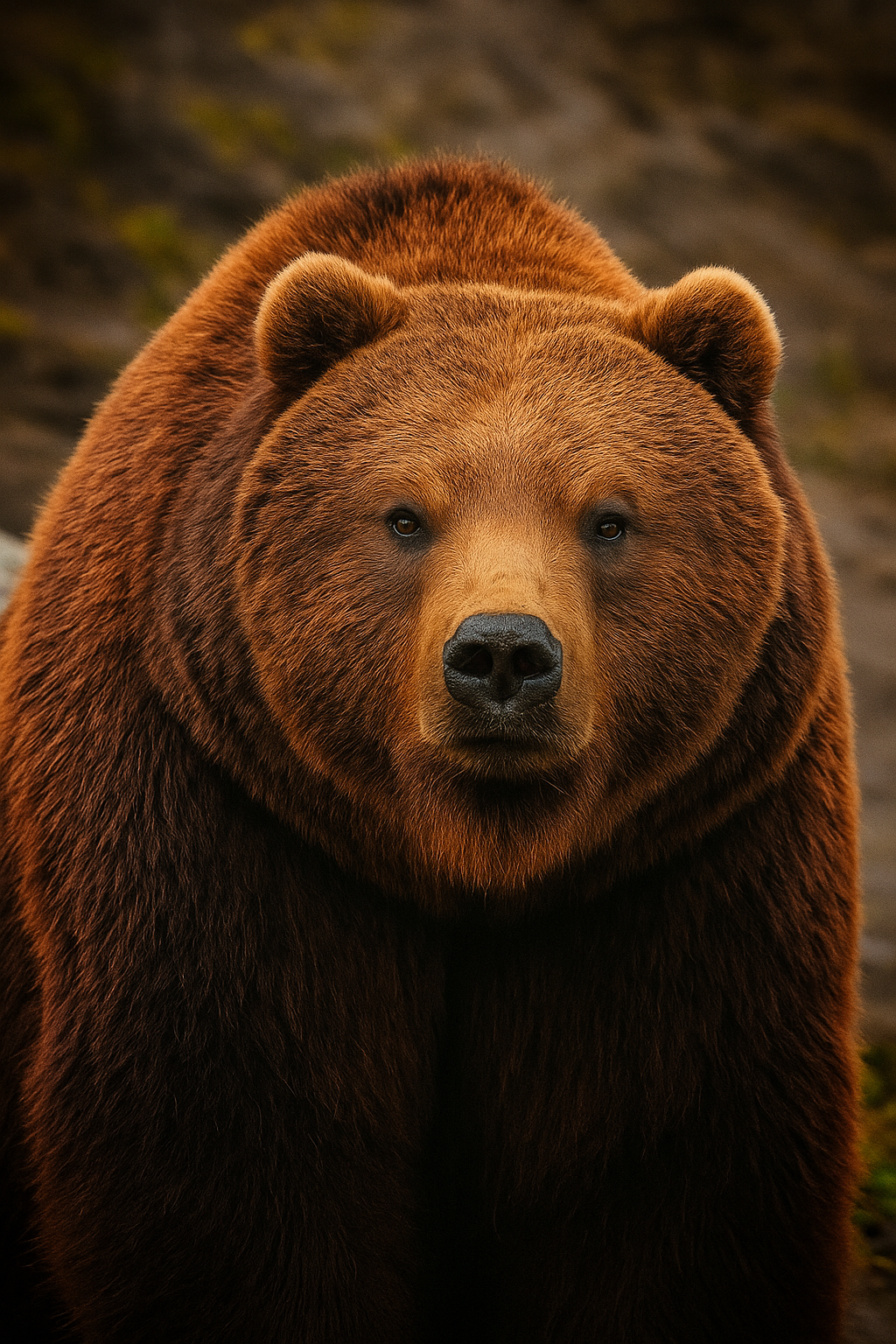
Ursus arctos horribilis
Grizzly Bear
The grizzly bear, also known as the North American brown bear or simply grizzly, is a population or subspecies of the brown bear inhabiting North America.
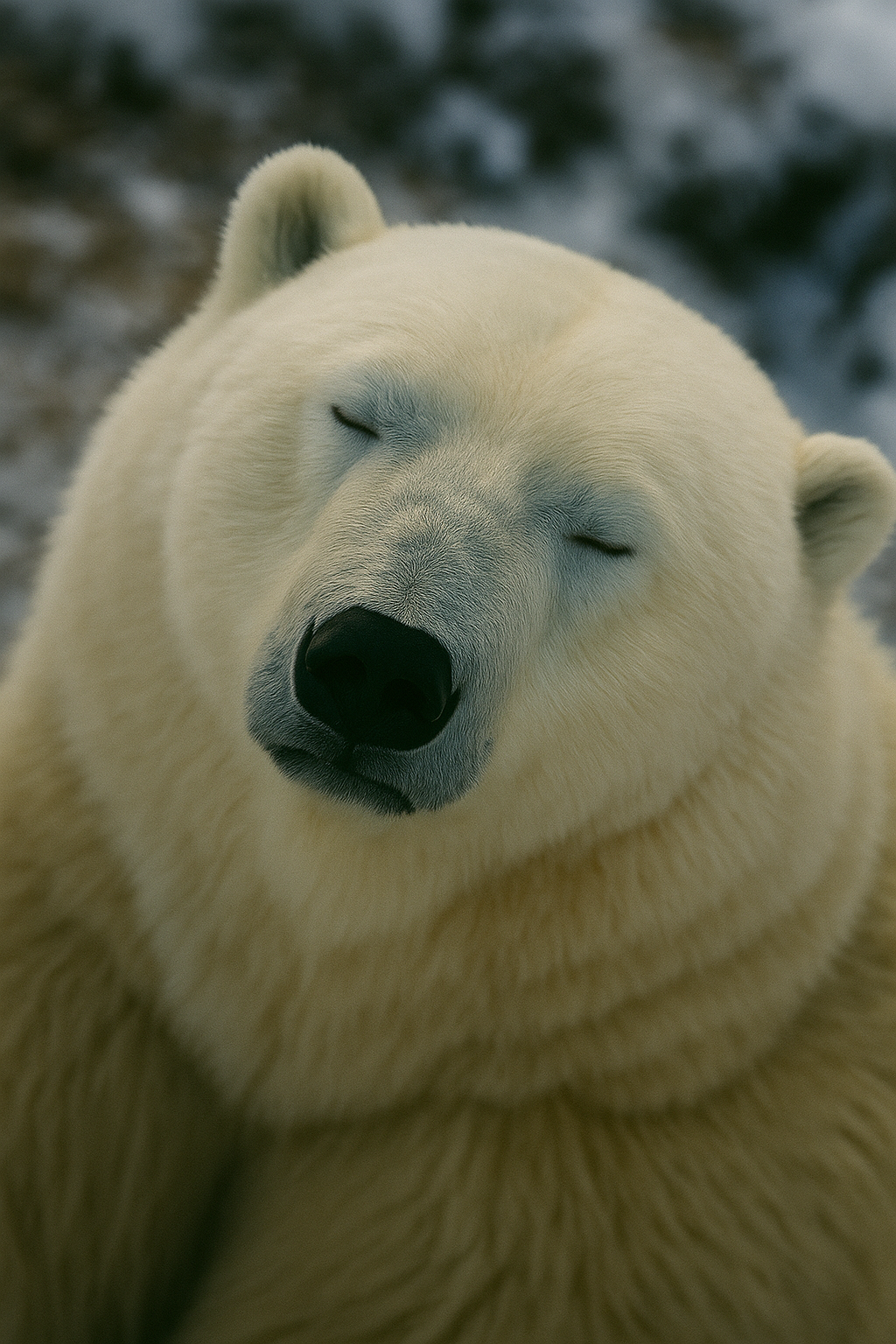
Ursus maritimus
Polar Bear
The polar bear is a large bear native to the Arctic and nearby areas. It is closely related to the brown bear, and the two species can interbreed. The polar bear is the largest extant species of bear and land carnivore, with adult males weighing 300–800 kg (660–1,760 lb).
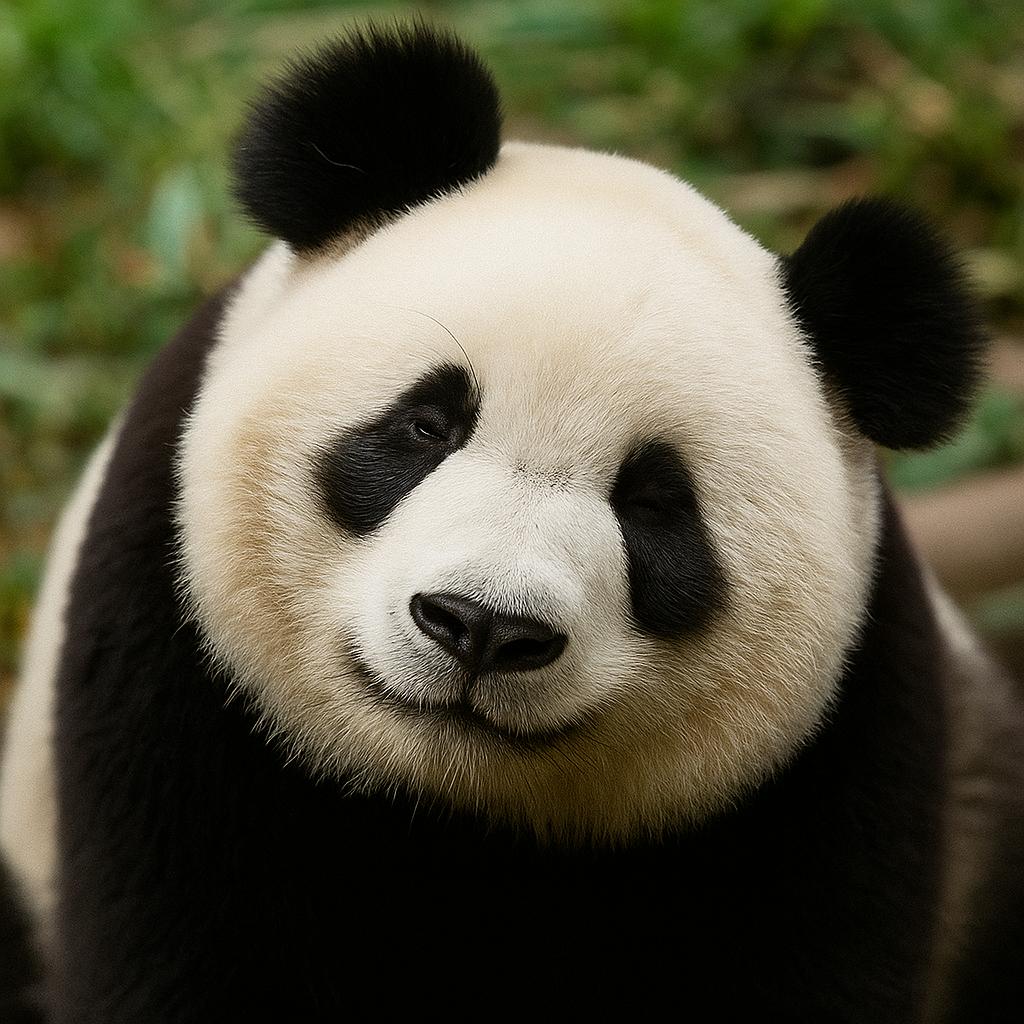
Ailuropoda melanoleuca
Giant Panda
The giant panda, also known as the panda bear or simply panda, is a bear species endemic to China. It is characterised by its white coat with black patches around the eyes, ears, legs and shoulders. Its body is rotund; adult individuals weigh 100 to 115 kg (220 to 254 lb) and are typically 1.2 to 1.9 m (3 ft 11 in to 6 ft 3 in) long.
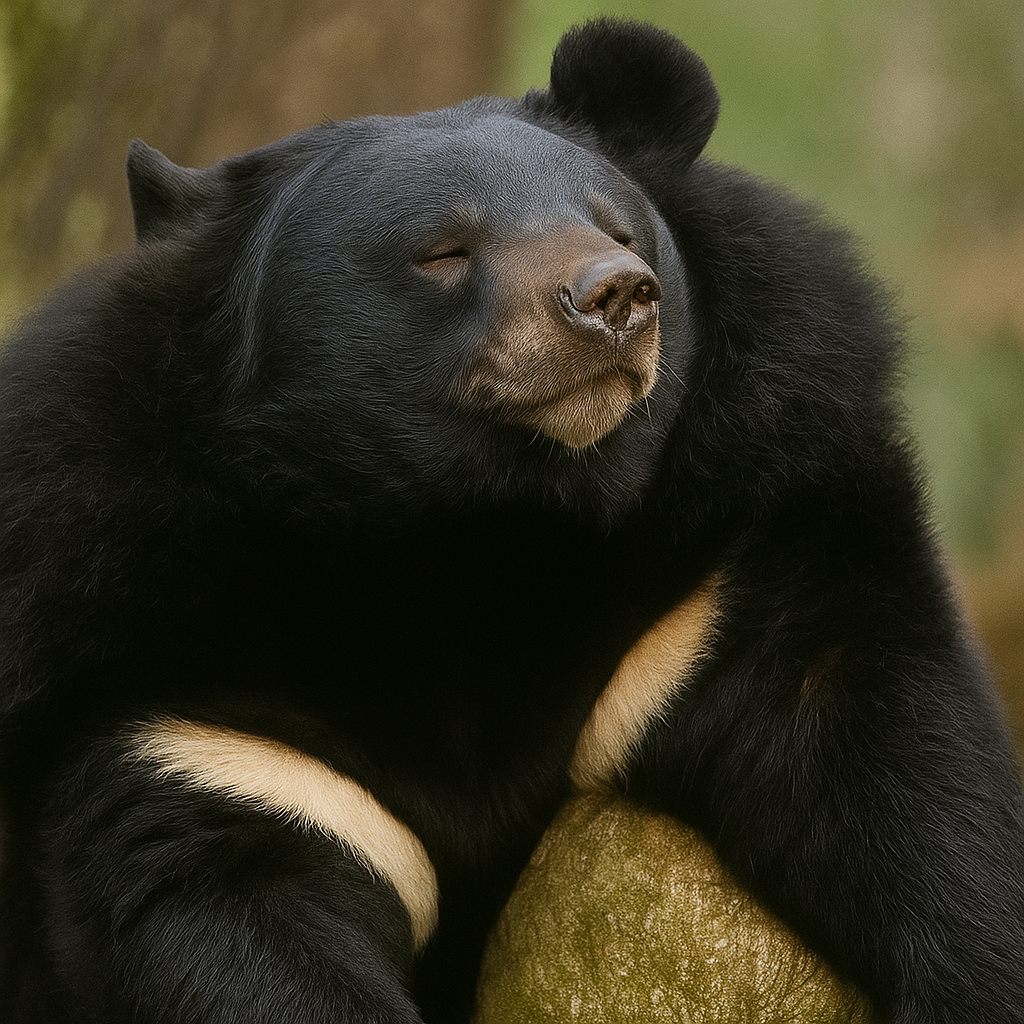
Ursus thibetanus
Moon Bear
The Asian black bear, also known as the Asiatic black bear, moon bear and white-chested bear, is a medium-sized bear species native to Asia that is largely adapted to an arboreal lifestyle. It lives in the Himalayas, southeastern Iran, the northern parts of the Indian subcontinent, Mainland Southeast Asia, the Korean Peninsula, China, the Russian Far East, the islands of Honshū and Shikoku in Japan, and Taiwan. It is listed as vulnerable on the IUCN Red List, and is threatened by deforestation and poaching for its body parts, which are used in traditional medicine.
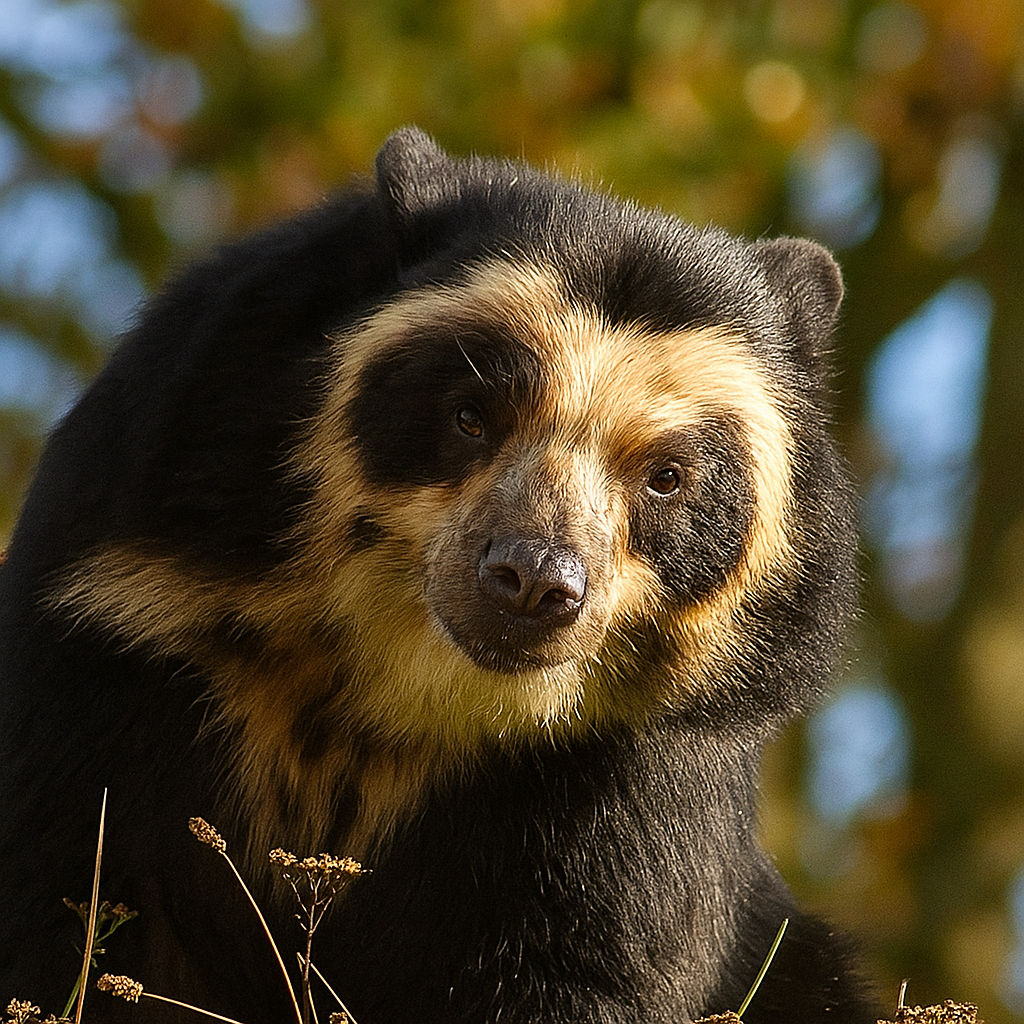
Tremarctos ornatus
Spectacled Bear
The spectacled bear, also known as the South American bear, Andean bear, Andean short-faced bear or mountain bear and locally as jukumari (Aymara and Quechua), ukumari (Quechua) or ukuku, is a species of bear native to the Andes Mountains in northern and western South America.
It is the only living species of bear native to South America, and the last remaining short-faced bear (subfamily Tremarctinae). Its closest relatives are the extinct Tremarctos floridanus, and the giant short-faced bears (Arctodus and Arctotherium), which became extinct at the end of the Pleistocene around 12,000 years ago. Unlike other omnivorous bears, the diet of the spectacled bear is mostly herbivorous. The species is classified as Vulnerable by the IUCN because of habitat loss.
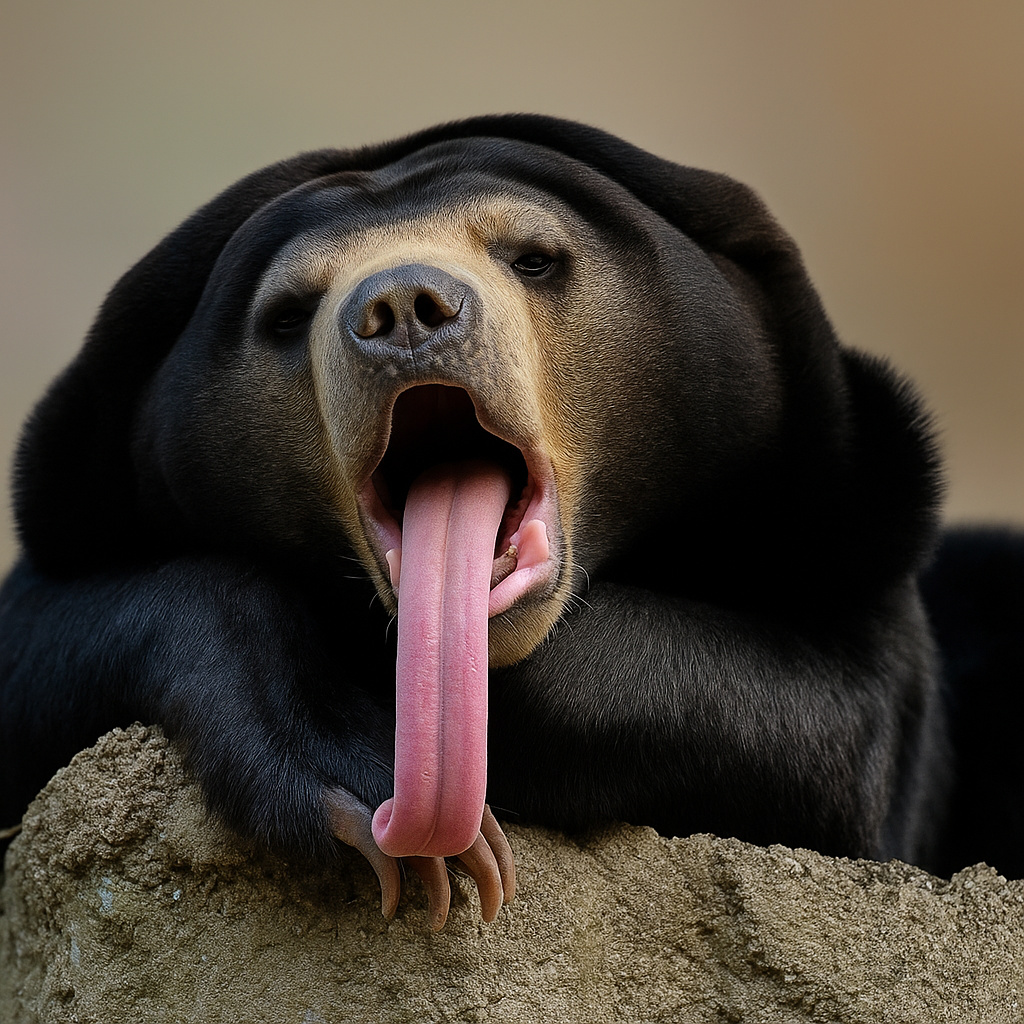
Helarctos malayanus
Sun Bear
The sun bear is a bear species in the family Ursidae (the only species in the genus Helarctos) occurring in the tropical forests of Southeast Asia. It is the smallest bear species, standing nearly 70 cm (28 in) at the shoulder and weighing 25–65 kg (55–143 lb). It is stockily built, with large paws, strongly curved claws, small, rounded ears and a short snout.
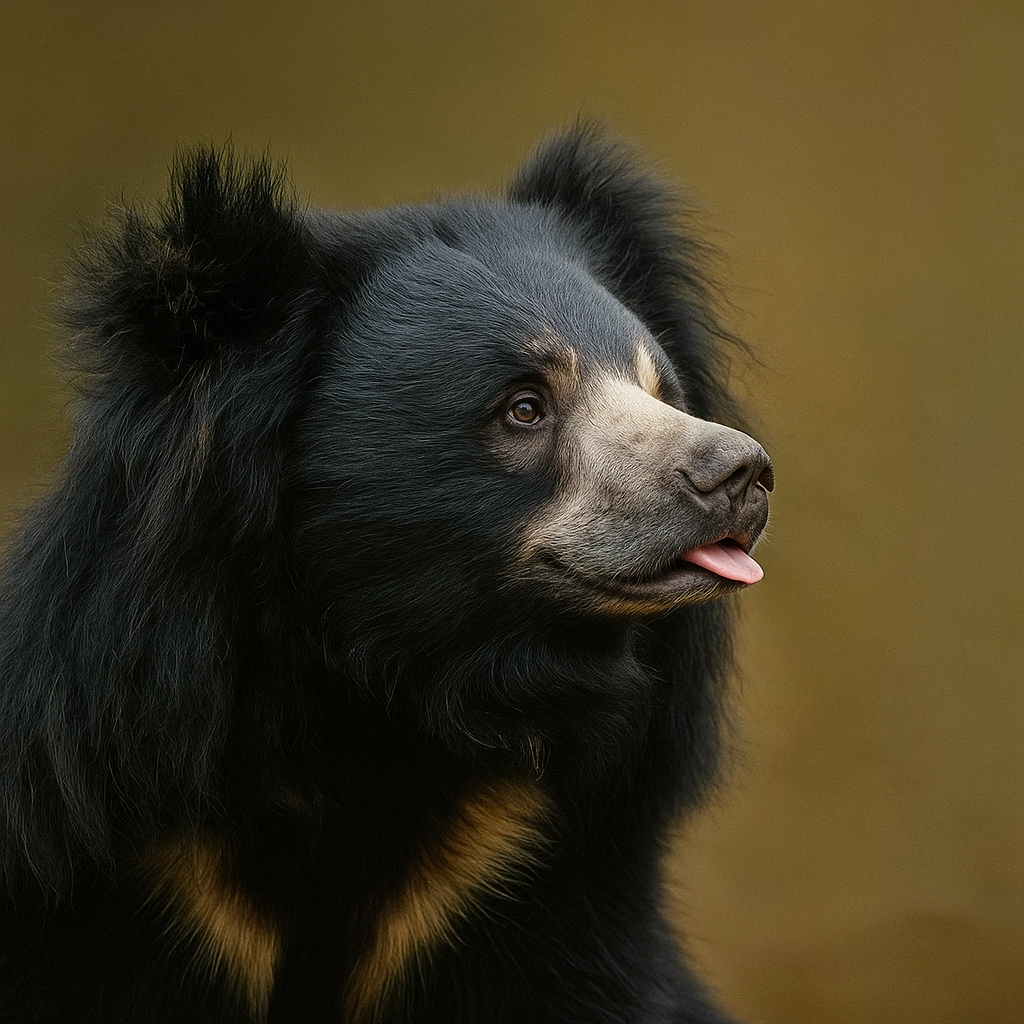
Melursus ursinus
Sloth Bear
The sloth bear, also known as the Indian bear, is a myrmecophagous bear species native to the Indian subcontinent. It feeds on fruits, ants and termites. It is listed as vulnerable on the IUCN Red List, mainly because of habitat loss and degradation. It is the only species in the genus Melursus.
It has also been called "labiated bear" because of its long lower lip and palate used for sucking up insects. It has long, shaggy fur, a mane around the face, and long, sickle-shaped claws. It is lankier than brown and Asian black bears. It shares features of insectivorous mammals and evolved during the Pleistocene from the ancestral brown bear through divergent evolution.
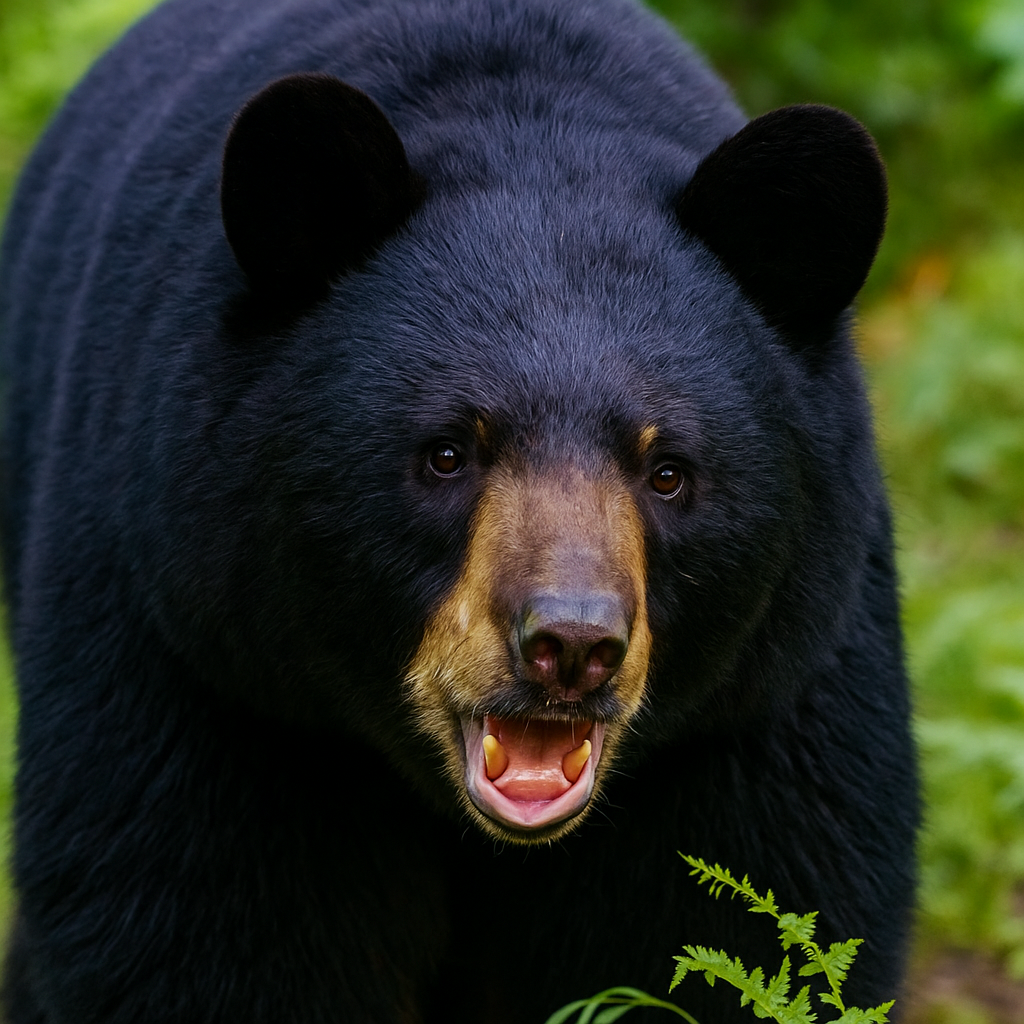
Ursus americanus
Black Bear
The American black bear, or simply black bear, is a species of medium-sized bear endemic to North America. It is the continent's smallest and most widely distributed bear species.
It is an omnivore, with a diet varying greatly depending on season and location. It typically lives in largely forested areas but will leave forests in search of food and is sometimes attracted to human communities due to the immediate availability of food.
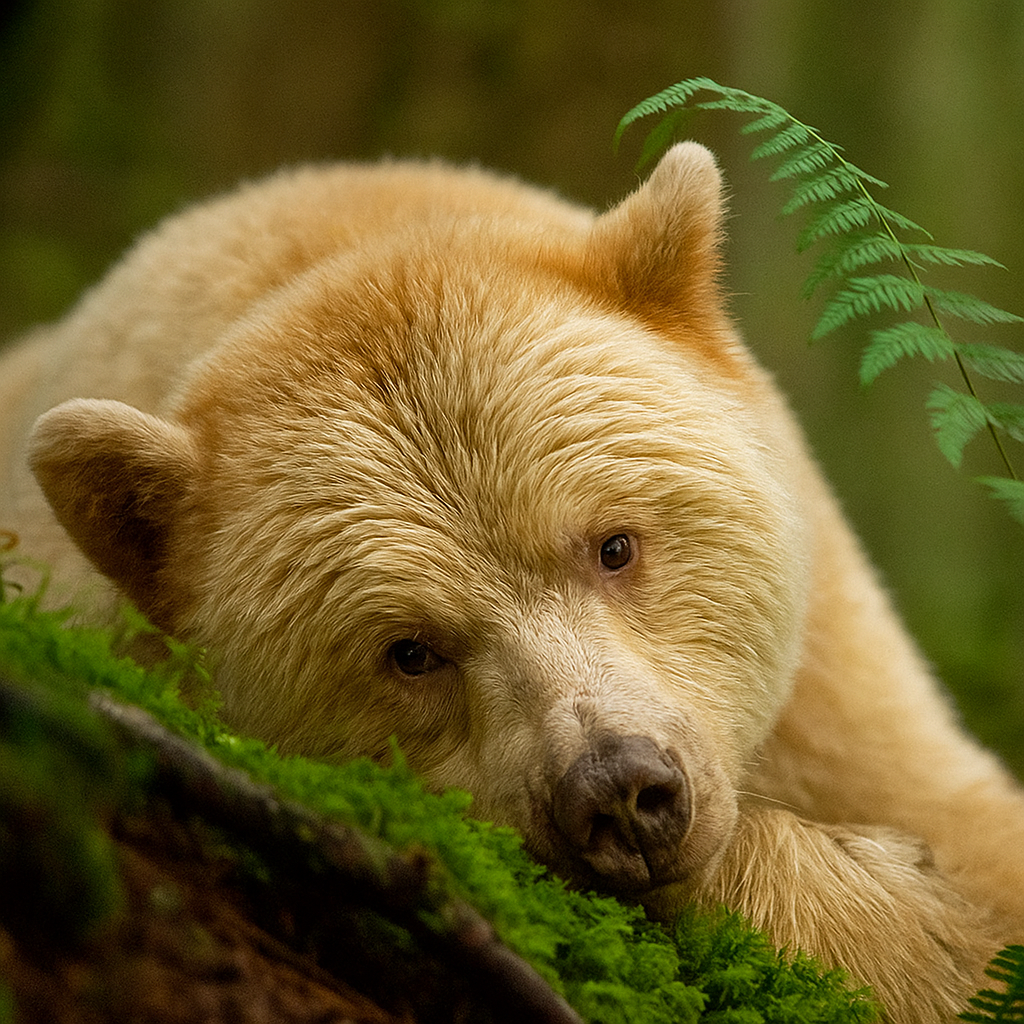
Ursus americanus kermodei
Kermode Bear
The spirit bear, sometimes called the Kermode bear, is a subspecies of the American black bear and lives in the Central and North Coast regions of British Columbia, Canada. It is the official provincial mammal of British Columbia and symbol of Terrace, British Columbia. While most Kermode bears are black, between 100 and 500 fully white individuals exist. The white variant is known as spirit bear, and is most common on three islands in British Columbia (Gribbell, Princess Royal, and Roderick), where they make up 10–20% of the Kermode population. Spirit bears hold a prominent place in the oral traditions of the indigenous peoples of the area.
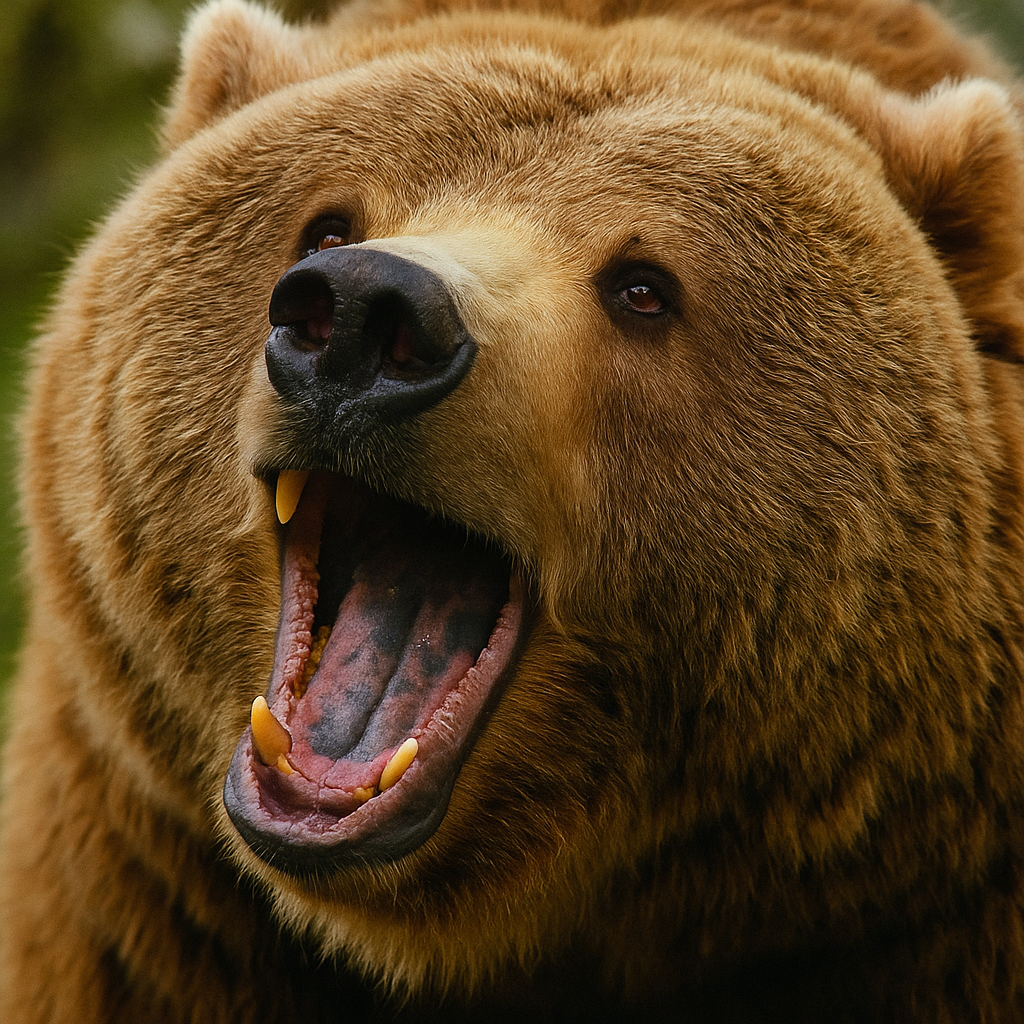
Ursus arctos
Brown Bear
The brown bear is a large bear native to Eurasia and North America. Of the carnivorans, it is rivaled in size only by its closest relative, the polar bear, which is much less variable in size and slightly bigger on average. The brown bear is a sexually dimorphic species, as adult males are larger and more compactly built than females. The fur ranges in color from cream to reddish to dark brown. It has evolved large hump muscles, unique among bears, and paws up to 21 cm (8.3 in) wide and 36 cm (14 in) long, to effectively dig through dirt. Its teeth are similar to those of other bears and reflect its dietary plasticity.
Hibearnation Bear Wannabes
-

Red Panda
Ailurus fulgens
The red panda, also known as the lesser panda, is a small mammal native to the eastern Himalayas and southwestern China. It has dense reddish-brown fur with a black belly and legs, white-lined ears, a mostly white muzzle and a ringed tail.
The red panda was formally described in 1825. The two currently recognised subspecies, the Himalayan and the Chinese red panda, genetically diverged about 250,000 years ago. The red panda's place on the evolutionary tree has been debated, but modern genetic evidence places it in close affinity with raccoons, weasels, and skunks. It is not closely related to the giant panda, which is a bear, though both possess elongated wrist bones or "false thumbs" used for grasping bamboo. -

Water Bear
Phylum Tardigrada
Tardigrades known colloquially as water bears or moss piglets, are a phylum of eight-legged segmented micro-animals. They were first described by the German zoologist Johann August Ephraim Goeze in 1773, who called them Kleiner Wasserbär 'little water bear'. In 1776, the Italian biologist Lazzaro Spallanzani named them Tardigrada, which means 'slow walker'. -

Koala Bear
Phascolarctos cinereus
The koala, sometimes called the koala bear, is an arboreal herbivorous marsupial native to Australia. It is the only extant representative of the family Phascolarctidae. Its closest living relatives are the wombats. The koala is found in coastal areas of the island's eastern and southern regions, inhabiting Queensland, New South Wales, Victoria, and South Australia. It is easily recognisable by its stout, tailless body and large head with round, fluffy ears and large, dark nose. -

Honey Bear
Potos flavus
The kinkajou, is a tropical rainforest mammal of the family Procyonidae related to olingos, coatis, raccoons, and the ringtail and cacomistle. It is the only member of the genus Potos and is also known as the "honey bear" (a name that it shares with the unrelated sun bear). Though kinkajous are arboreal, they are not closely related to any other tree-dwelling mammal group (primates, some mustelids, etc.). -

Bearcat (Biturong)
Arctictis binturong
The binturong, also known as the bearcat, is a viverrid native to South and Southeast Asia. It is uncommon in much of its range, and has been assessed as Vulnerable on the IUCN Red List because of a declining population. It is estimated to have declined at least 30% since the mid-1980s. The binturong is the only species in the genus Arctictis. -

Hedgehog
Hedgehogs are small, spiny mammals known for their unique ability to roll into a tight ball to protect themselves from predators. Native to Europe, Asia, and Africa, they have sharp quills on their backs and soft fur on their undersides. Hedgehogs are nocturnal insectivores, feeding primarily on insects, worms, and small invertebrates.
In colder climates, many species hibernate during the winter to conserve energy, entering a state of torpor where their body temperature, heart rate, and metabolism significantly drop. They prepare for hibernation by building up fat reserves and creating cozy nests in hidden, insulated spots like under hedgerows or in leaf piles. -

American Badger
Taxidea taxus
The American badger is a stocky, burrowing mammal native to North America, known for its powerful forelimbs and striking facial markings, including white stripes on its face and a silver-gray coat. They inhabit grasslands, prairies, and deserts, where they dig extensive burrows to hunt for small mammals like ground squirrels and rabbits.
Although they do not hibernate, American badgers enter a state of torpor during the coldest months, reducing their activity and retreating to their dens to conserve energy. Solitary by nature, these nocturnal predators play a vital role in controlling rodent populations in their ecosystems. -

Tanuki
Nyctereutes viverrinus
The tanuki, or Japanese raccoon dog, is a small, dog-like mammal native to East Asia. It is easily recognized by its thick fur, rounded face, and dark markings around its eyes, resembling a raccoon. Tanuki are omnivores, feeding on fruits, insects, small animals, and plants, and they are known for their adaptability to various habitats, including forests and urban areas.
Unlike true hibernators, tanuki in colder regions enter a state of winter torpor, reducing their activity and lowering their metabolic rate during harsh winters. They store fat in autumn to sustain themselves through this period. Culturally significant in Japan, tanuki are often featured in folklore as symbols of mischief, transformation, and good fortune. -
To be continued...
You can submit a species to the wishlist here!As the brand grows, more hibernators and cozy creatures will be added to our collection and this list. They will then be included as art pieces on our loungewear. The reforestation efforts will be aimed at each of these creatures' respective habitats.








